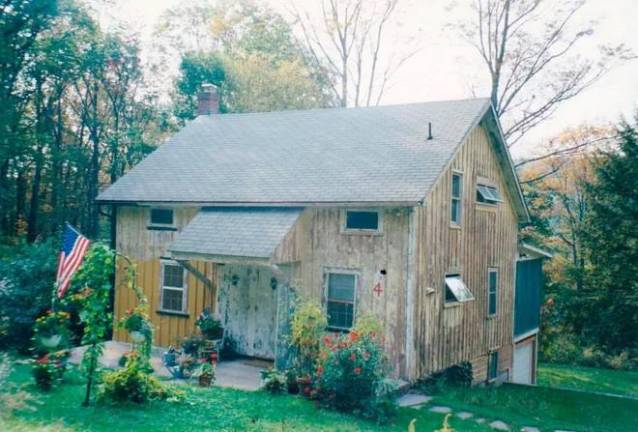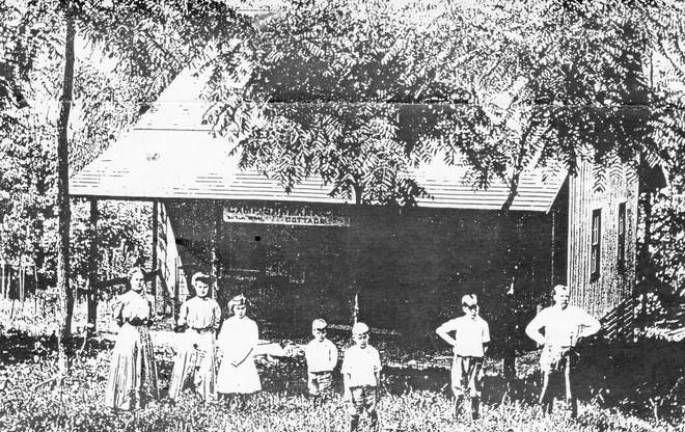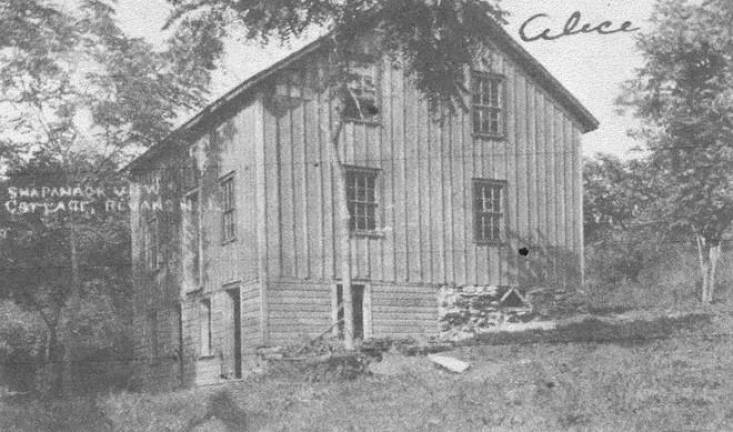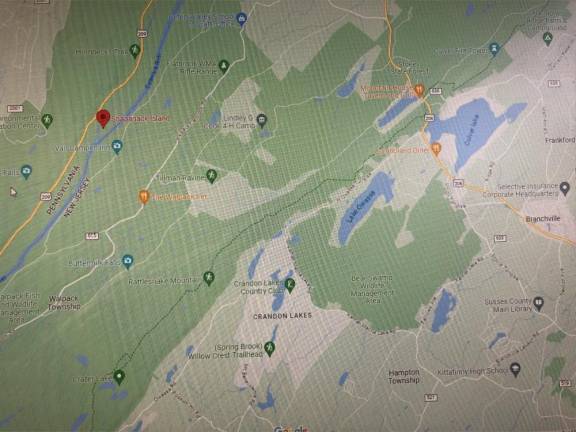



The Sussex County Historical Marker program is alive and well.
Three additional markers were awarded this year to deserving applicants in the county, and they received them at the recent New Jersey State Fair-Sussex County Farm & Horse Show.
This week, we look at the marker awarded to the Walpack Historical Society for the location known as Shapanack.
I am delighted again this week to welcome historian Jennie Sweetman, who has offered to explain to us the importance of Shapanack.
“Sussex County Historian Bill Truran recently announced that the ancient locality of Shapanck is to receive a Sussex County Historical Marker.
“Attorney Don Stieh, Walpack Historical Society president, explained that Shapanack, or its variant spellings, acquired its unique name from Lenape Indians, with the word signifying ‘out-stretched arms of the place where the river spreads out.’
“Steeped in history well describes the locality that dates back to March 26, 1729, when Alexander Rosenkrans and Frederick Schoonmaker purchased 926 acres of land at Shapanack from John Crook Jr., an agent for London brewer John Helby, for 600 pounds. It was Rosenkrans’ son, Harmon, who is believed to have built the original portion of the Van Campen Inn about 1742.
“In addition to the famed inn, also included in Shapanack’s historic past were a Dutch Reformed Church, a cemetery, a fort, a military road and slavery.
“The octagonal-shaped church, where worship services were held from 1770 until 1826, was unique as due to a shortage of ministers in the area, from 1772 until 1826, serving as its pastor was a Presbyterian minister, the Rev. Daniel Thaxter.
“The cemetery appears to be divided into several parts with the most important person laid to rest there was Mrs. Anna Symmes, who passed away on July 25, 1776. Although she did not live to see it, Mrs. Symmes was the mother-in-law of President William H. Harrison and great-grandmother of President Benjamin Harrison.
“One portion of the cemetery is known as the slave cemetery. Local historian Sharon Spangenberg has devoted a considerable amount of time endeavoring to place names to those persons laid to rest there where only fieldstones mark their burial spot. As an example of slavery in Shapanack, when Col. Rosenkrans passed away in 1786, he left his widow the choice of his wenches; his son, John, his Negro boy Cuff. He manumitted his slaves Sophie and her four children and his three manservants: David, Adam and Enos.
“In addition to the cemetery, also located on the hilltop was the frontier fort known by several names, such as Fort Shapanack, Fort Johns or Headquarters. Col. John Rosenkrans served as the fort’s commander. This fort served as a military base for a period that spanned 27 years and was used during both the French and Indian War as well as the American Revolutionary War. As an example of what activity that took place here, on Nov. 6, 1763, Capt. Lemuel Bowers sent a dispatch from this fort writing that he had found 150 persons, including men, women and children, driven to this station by the cruel savages of the wilderness. He recorded that 50 lodged in one small room ... . Included among those who stayed very briefly at this camp was Gen. Pulaski.
“As for the military road that was used to haul supplies to the frontier forts, mention of the road first appears on a 1757 Jonathan Hampton Map. Only a one-mile portion leading to Walpack Village remains of this historic trail.
“Time marches on. About 1907, what is guessed to have been an abandoned country schoolhouse was relocated to the site where the building still stands and was reused to become the headquarters for Camp Shapanack, a summer camp facility. It was later converted to a private dwelling.”
Contact Bill Truran, Sussex County historian, at billt1425@gmail.com